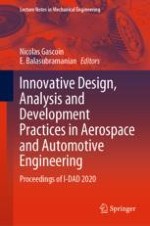This book gathers the best articles presented by researchers and industrial experts at the International Conference on “Innovative Design, Analysis and Development Practices in Aerospace and Automotive Engineering (I-DAD 2020)”. The papers discuss new design concepts, and analysis and manufacturing technologies, with a focus on achieving improved performance by downsizing; improving the strength-to-weight ratio, fuel efficiency and operational capability at room and elevated temperatures; reducing wear and tear; addressing NVH aspects, while balancing the challenges of Euro VI/Bharat Stage VI emission norms, greenhouse effects and recyclable materials. Presenting innovative methods, this book is a valuable reference resource for professionals at educational and research organizations, as well as in industry, encouraging them to pursue challenging projects of mutual interest.
